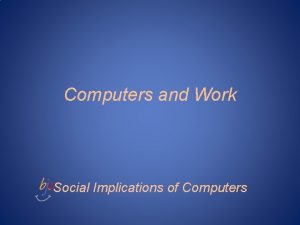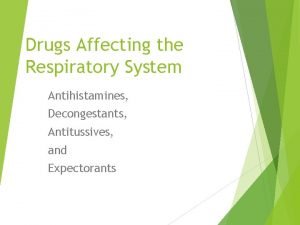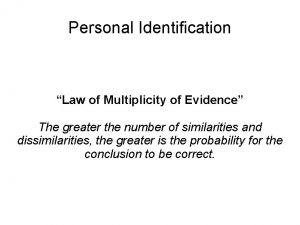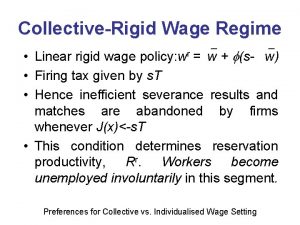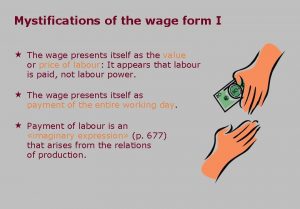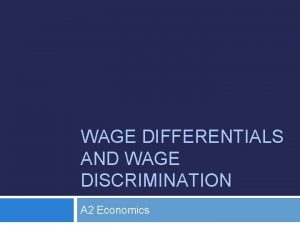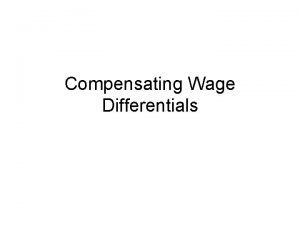The role of wage policy in Europe Implications
















- Slides: 16

The role of wage policy in Europe: Implications of the wage-led demand regime Ozlem Onaran, Middlesex University and Engelbert Stockhammer, Kingston University

Motivation • Wage policy – Full employment – Fair and stable income distribution – Balanced international positions • Neoclassical/’mainstream’/NCM – Wage flexibility – in theory, wage moderation – in practice – wages merely as a cost item, and ignores the role of wages as a source of demand • Post-Keynesian/New Economics – Eurozone: wage-led demand • wage moderation→growth↓, unemployment↑ – Productivity-oriented wage policy – coordination of (national) wage bargaining systems – Take into account inflation target and external position – In the € area: higher wages in Germany!

Outline • What is the effect of a wage cut on demand? • Theoretical background – Wage-led vs. profit-led demand regime – Neo-Kaleckian/Post-Keynesian model • Empirical literature • wage policy in Europe – Imbalances: export-led growth and credit-led growth – Wage coordination 3

Wage share and GDP growth, 1961 -2010 Wage share 4

1961 1962 1963 1964 1965 1966 1967 1968 1969 1970 1971 1972 1973 1974 1975 1976 1977 1978 1979 1980 1981 1982 1983 1984 1985 1986 1987 1988 1989 1990 1991 1992 1993 1994 1995 1996 1997 1998 1999 2000 2001 2002 2003 2004 2005 2006 2007 2008 2009 2010 Wage share and unemployment, 1961 -2010 70 12 68 unemployment 66 64 60 56 Wage share 54 50 Adjusted Wage share Unemployment 5 10 8 62 6 58 4 2 52 0

Model • What is the effect of a wage cut on demand? • Neo-Kaleckian/Post-Keynesian model • pro-capital income distribution: + & - effects on aggregate demand - effect on C: the relative size of the consumption differential out of wage vs. profit income + effect on I: the sensitivity of investment to profits + effect on NX: the sensitivity of net exports to unit labor costs Total effect on demand is ambiguous -: wage-led demand +: profit-led demand • Bhaduri and Marglin (1990)

Empirical Literature • Systems approach (VAR): Deals with simultaneity, weak in identifying effects on C and I (few if any control variables) – small effects (Stockhammer & Onaran 04, US, UK, F; Onaran & Stockhammer 05, Korea, Turkey) or profit-led demand (Barbosa-Filho & Taylor 06, US; Flaschel & Proano 07) • Single equation approach: Good in identifying effects, bad in dealing with endogeneity – estimate separate C, I, NX functions. • Bowles & Boyer 95; Naastepad & Storm 06; Hein and Vogel 08: OECD 6/8 – estimate separate C, I, X, M, P functions • Onaran, Stockhammer, Grafl 11, Stockhammer, Onaran, Ederer 09; Ederer & Sto. 07, Sto. & Ederer 08, Sto. /Hein/Grafl 10: US, Eurozone, France, Austria, Germany respectively • US: effects of financialization • Most find wage-led private domestic demand regimes – Onaran et al 11, Stockhammer et 7 al 09, Storm&Naastepad 06, Hein&Vogel 08, Sto. &Ste 09

Empirical findings: Euro area • Stockhammer, Onaran, Ederer, CJE 2009 • low degree of openness (X/Y: 12%) -> wage-led regime • Estimate the effects of functional income distribution consumption, investment and net exports • A 1%-pt decrease in the wage share (WS) leads to • Consumption ↓ by 0. 4%-pt (as a ratio to GDP) • Investment ↑ by 0. 1%-pt (as a ratio to GDP) • Domestic private demand ↓ by 0. 3% • Net exports ↑ by 0. 1%-pt (0. 06 -0. 13%-pt ) • Aggregate demand (private) ↓ by 0. 2% →EU as a whole has a wage-led demand regime, although some individual member states may have a profit-led regime

Wage policy in the Euro area • Race to the bottom: declining wage shares (22 wage pacts aimed at improving competitiveness) • Fall in wage share has led to a stagnation of domestic demand • 2 growth models in response: credit-led and export-led growth • → imbalances within the Euro area Credit-led Export-led Center (US, UK) Germany, Austria (Japan) Periphery Greece, Ireland, Portugal, Spain (China)

Germany: GDP, priv. cons. , adj WS (1994 = 1)

ULC (2000 = 100; AMECO) 140 135 130 125 Germany Netherlands 120 Austria Ireland 115 Greece 110 Spain Italy 105 Portugal 100 95 90 2001 2002 2003 2004 2005 2006 2007 2008 2009 2010

Current account (% GDP), avg. 2000 -07 Germany 3. 8 Greece -8. 5 Austria 1. 7 Portugal -8. 9 Netherlands 5. 6 Spain -5. 8 Italy -1. 3 Ireland -2. 1

Increases in household debt Increase in HH debt (in % GDP) 2000/04 and 2000/08 Germany 2000/08 -11. 34 Ireland 61. 72 Netherlands 29. 1 Greece 18. 26 Austria 7. 21 Spain 32. 53 Italy 18. 09 Portugal 21. 31 2000/05

How can the €-zone re-balance? • How much rebalancing is necessary? – ULC 25 -30% – German wage growth has to be 2. 5%-pts. above mediterranean wage growth for 10 years! • 1 deflation – Big contraction in PIIGS to bring down GDP and ULC and thus, ultimately, CA-deficit – But: that means rising debt ratios! • 2 inflation – Expansion and/or wage inflation in Germany – Higher inflation target in € area!

Wage coordination • European system of coordinated wage bargaining • As part of a new policy economic policy mix • Aim: – ensure that living standards of the working class are growing – Prevent excessive inflation – Prevent/counteract imbalances • wj = xj + p. T + a(ULCEU – ULCj) – w. . wage growth, x. . productivity growth, p. T. . inflation target, ULC. . unit labour costs, – Subscripts EU and country j – p. T would have to be set such as to avoid deflation in all countries, while allowing rebalancing

Wage policy - conclusions • Focus on wage flexibility is misplaced – Does not guarantee full employment – Unable to guarantee a fair and stable distr of income – Unable to avoid international imbalances • Productivity-oriented wage policy to stabilize effective demand • Coordination of wage bargaining systems to prevent a race to the bottom • In the Euro area: wage policy has to take into account current account positions • To avoid a deflationary adjustment: substantially higher wage growth in Germany (mediterranean wages +3%-pts. for 10 yrs)
 Azure web role vs worker role
Azure web role vs worker role Role making krappmann
Role making krappmann Statuses and their related roles determine
Statuses and their related roles determine Humalog nursing implications
Humalog nursing implications Nursing implications for synthroid
Nursing implications for synthroid Language
Language Tautological implications in discrete mathematics
Tautological implications in discrete mathematics Legal implications in nursing practice
Legal implications in nursing practice Medical implications of developmental biology
Medical implications of developmental biology Database management approach
Database management approach Social implications of computers
Social implications of computers Bandura social learning theory 1971
Bandura social learning theory 1971 Nursing implications
Nursing implications Benzonatate nursing implications
Benzonatate nursing implications Educational implications of operant conditioning
Educational implications of operant conditioning Law of multiplicity
Law of multiplicity Security implications
Security implications










